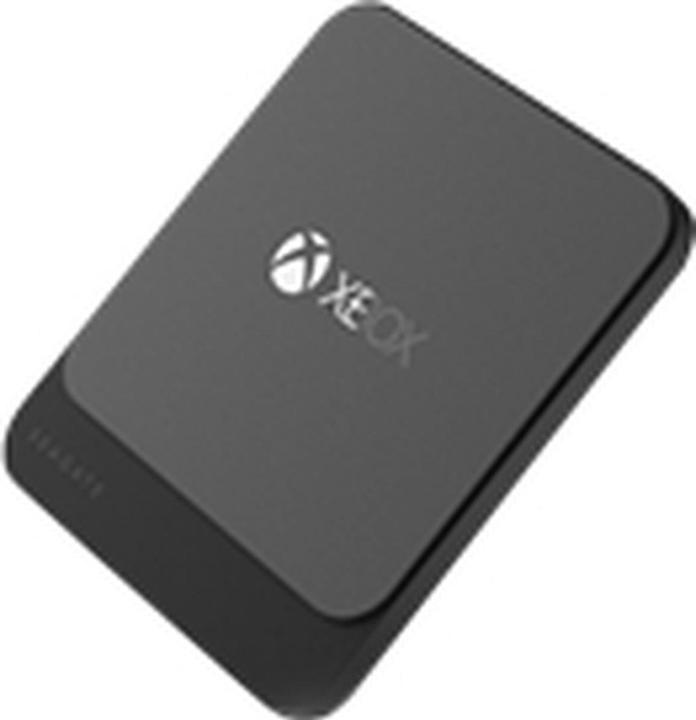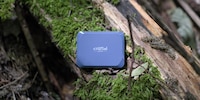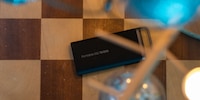

Badge engineering: how the same product can be sold at 3 different prices
Badge engineering or rebadging is a term I’m used to from the car industry. And yet it wasn’t until recently that I realised this happened with external hard drives, too. Believe it or not, there’s even an example in our own shop.
Just so we’re all clear on the definition, rebadging is marketing the same product using a different name and perhaps a slightly different colour. This has been commonplace amongst car manufacturers for decades. The term «badge engineering» is actually meant in an ironic way. The trick is in sticking a company’s own logo – the badge – onto a product that has been «engineered» by another manufacturer. Obviously, that (almost) only happens with the creator’s consent.
While I was browsing our shop, I came across these three external SSDs by chance:

The first thing that springs to mind is badge engineering. I needed to get a closer look and managed to get my hands on the three external SSDs from those manufacturers. In fact, maybe I should be talking about manufacturer in the singular. After all, Seagate has owned LaCie since 2014 and the Irish manufacturer also produces the Game Drive for Xbox.
Are all three the same?
So here they are – all three external SSDs are in front of me. Let me introduce Seagate’s Fast SSD, LaCie’s Portable SSD and Seagate’s Game Drive for Xbox.
Unfortunately, not all of the drives boast the same capacity. For instance, Seagate sent me the 250 GB Fast SSD, while both of the other models were 500 GB. But equally, once I get my hands on the devices, the similarities are all the more striking. Looks-wise, the three external drives are only marginally different. The Seagate model comes in silver/grey, while the LaCie device comes in black with copper accents and the Xbox version is all black. When it comes down to it, the only things setting them apart are the colours and the brand names.
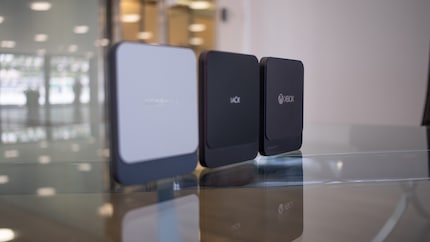
My suspicions about badge engineering seem to be confirmed. But what about under the branding facade? Will I even find the same technology lurking there? A quick glance at the back of the drives and the descriptions cements this idea in my head: Seagate, LaCie and Xbox share the same model number (SRD0FV0).
To get a rough idea, I run the ATTO disk benchmark. As it happens, it does give more or less identical results.
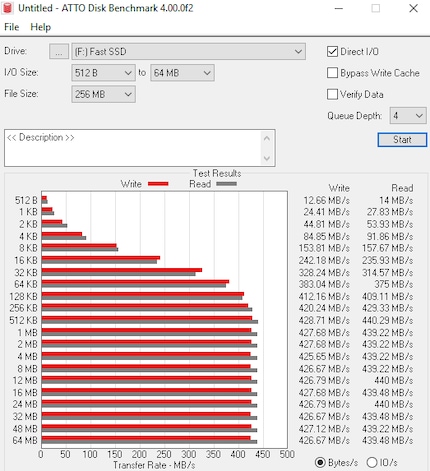
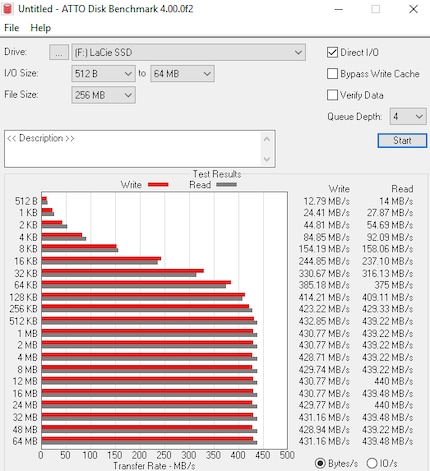
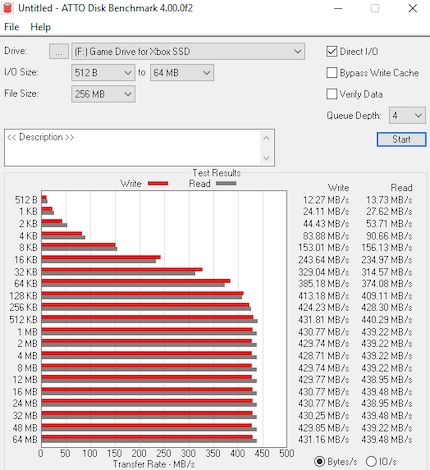
But I want to know exactly what type of components are hiding inside the external hard drive.
I grab my iFixit Pro Tech Toolkit and open the three external SSDs. As you can see, all three drives use the same controller, the Seagate STXZA01EA3B7. When it comes to DRAM and Flash, there are some differences. The 250 GB Fast SSD boasts a 256 MB DRAM Cache while the 500 GB Portable SSD and Game Drive for Xbox feature 512 MB DRAM. In other words, the 500 GB models don’t just share the controller; they also share the cache. Even the flash cells in both these models are the same and the PCB also looks identical.
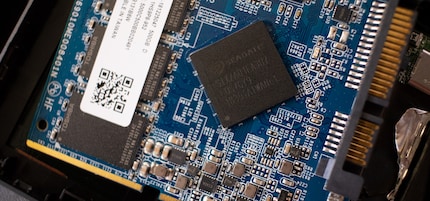
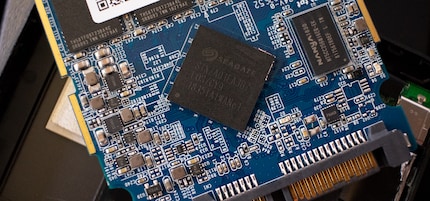
Spot the difference – left: LaCie right: Xbox
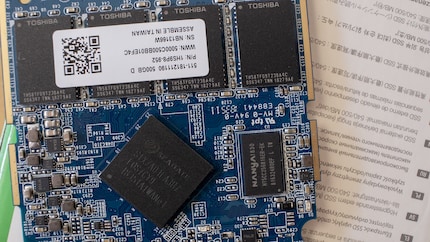
I think the 500 GB model of the Fast SSD also contains the same components as the Portable SSD and the Game Drive for Xbox. To be 100% sure, I grab one from our shop to tinker with. Don’t worry. Once I’ve opened it, it won’t be resold. And the results are in: I can’t spot any variations in the components in this version. In other words, it’s the same product with different branding. And this reflects in the price:
- The 500 GB model of the Fast SSD costs 114 Swiss francs in our shop.
- The Portable SSD comes in at 119 francs.
- The most expensive is the Game Drive for Xbox at 139 francs.
The prices are accurate at the time of writing on 19 June 2019 (excluding any special offers).
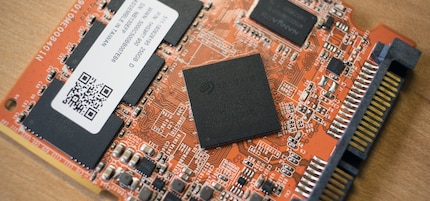
What does the manufacturer have to say?
I confront Seagate with my findings. What I want to know is if they really are using the same components in the three products or if I’m just blind. I estimate I’ll have to wait at least a week for a reply. But funnily enough, within half an hour, Gabriel Restaino from Seagate fires off a response:
I can confirm the Seagate and LaCie SSD contain the same components.
However, Gabriel makes a point of telling me that the LaCie portable SSD is designed for professionals while the Seagate Fast SSD is intended for the average consumer. According to Seagate, the Portable SSD also offers the following advantages over the Fast SSD:
- 3-year rather than 2-year warranty.
- 3-year rescue service included.
- 1-month of Adobe Creative Cloud included – valued at CHF 24.70 (Adobe Photoshop etc.).
OK, I can live with their reasoning. If I was to extend the warranty for the Seagate Fast SSD in our shop it would cost 18 francs. So five francs more for the LaCie Mobile Drive is actually a good deal.
And what about the Game Drive for Xbox? Well, an Xbox logo on a product is going to cost you. That’s just the way of it. If you’re looking for an external drive for your Xbox, all external drives are usually compatible with that device. And if you don’t absolutely have to have the Xbox logo on the casing, you’ll be able to save yourself a few francs by getting the Seagate Fast SSD or the LaCie Portable SSD.
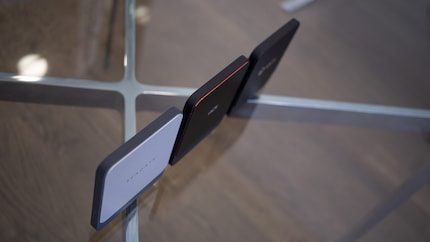
The price is right
Selling the same product under a different brand name and for varying prices is nothing new. And yet each time I stumble across an example like this, it always takes me by surprise. At the extreme end of the spectrum, branding could make 25 francs difference.
How on earth would I have been able to guess the price of an item on Harry Wijnvoord’s «The price is right» or as the TV programme is known in German «Der Preis ist heiss» when it can vary by up to 25 francs for the same product?
This demonstrates that it’s worth having a closer look at what you’re buying. In terms of value for money, the best deal is the LaCie Portable SSD. For five francs more, you get a three-year warranty rather than just two years. As for the Xbox model, I’d probably steer clear – not just because of the price but also because I don’t have an Xbox.
After tinkering about with these three external hard drives, I can confirm that badge engineering does exist beyond the automotive industry and is a technique used by hard drive manufacturers. But the different prices only seem unusual when you first look at them. Dig a bit deeper and they make sense.
The only thing left to say is that all three drives are very quick and do their job seamlessly. In fact, I think the devices are pretty cool. They’re the perfect size and I like the design. Personally, I’d buy the Seagate Fast SSD. I’m not risk-averse so I’m happy to forego the extra year’s warranty.
From big data to big brother, Cyborgs to Sci-Fi. All aspects of technology and society fascinate me.
Interesting facts about products, behind-the-scenes looks at manufacturers and deep-dives on interesting people.
Show all
